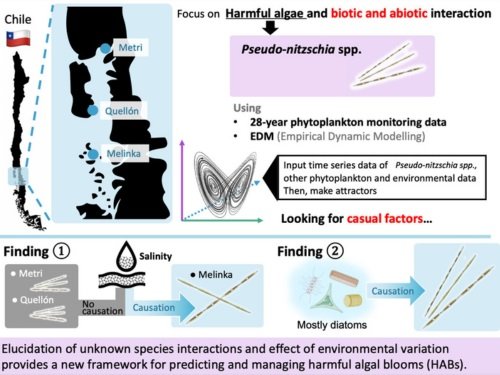NOAA is announcing $15.2M in funding for harmful algal bloom (HAB) research projects throughout U.S. coastal and Great Lakes waters. HABs can produce toxins or cause other harmful effects that can damage ecosystems, disrupt our seafood supply, impact economies, and threaten human health.
Marine and fresh waters of the United States are increasingly impacted by HABs with blooms reported in nearly every state. They cause annual economic losses up to $100 million on average and costs from a single major HAB event can reach tens of millions of dollars. Investments in these projects represent a coordinated effort within the National Ocean Service to advance our nation’s ability to observe, monitor, forecast, and manage blooms.
NOAA’s National Centers for Coastal Ocean Science (NCCOS) is allocating $12.4M for harmful algal bloom research, including $834K for three new research awards and $11.6M for 25 continuing awards. Funded projects will optimize early warning of shellfish-killing algae; enhance detection of HAB toxins; test the use of HAB control methods in marine and freshwater; improve HAB forecasts; and investigate the social and economic impacts of HABs. A full list of the new grant awards is available online.
“New projects will begin in Florida, Louisiana, Ohio and Washington to investigate the effectiveness of clay dispersal as a technology to control Karenia brevis blooms in the coastal environment of Southwest Florida; enhance the freshwater HAB toxin detection capabilities of autonomous underwater vehicles; and optimize an early warning system to support the mitigation of shellfish-killing HAB toxins in the Pacific Northwest”, said David Kidwell, NOAA NCCOS Competitive Research Program director. “Through NCCOS, NOAA continues to fund the latest scientific research to support managers and coastal communities across the country trying to cope with increasing and recurring toxic algae that continue to affect environmental and human health.”
NOAA’s U.S. Integrated Ocean Observing System Office (IOOS) is allocating $2.8M for National Harmful Algal Bloom Observing Network’s related activities. Eight IOOS Regional Associations will receive a combined $1.5M for two new and five continuing NHABON pilot programs to support detection, forecasting, and monitoring of HABs. An additional $1M will be used to establish an initial HABs monitoring and detection test bed in the Gulf of Mexico and $314K for a continuing Ocean Technology Transition (OTT) project
“Projects funded this year cover most of the U.S. continental coast, including the Great Lakes, and Alaska. These have been developed by the IOOS Regional Associations in partnership with local communities and research institutions to address known needs and coverage gaps in their region,” said Carl C. Gouldman, Director, U.S. IOOS Office. “IOOS will continue to leverage local and national resources and expertise to identify innovative methods to address coastal hazards like HABs which pose a threat to lives and livelihoods everywhere.”
The Gulf of Mexico testbed is a first of its kind effort to develop capacity to improve detection and forecasting of harmful algal bloom species such as Karenia brevis and potential unidentified HAB species in the gulf. Over the course of this three-year pilot project, researchers will deploy a small suite of autonomous instruments to test their suitability in the turbid waters of the gulf, and build both the instrument and personnel capacity to operate, maintain and interpret data from the systems.
Stay Always Informed
Join our communities to instantly receive the most important news, reports, and analysis from the aquaculture industry.
Additional funds will go to improve monitoring and detecting of HABs in California, Florida, the Great Lakes, and the Gulf of Maine; expansion and support for HAB network and resources in Alaska and the Pacific Northwest; and an ongoing community science project in the Gulf of Mexico. A full list of the IOOS new grant awards can be found here.
Source: National Oceanic and Atmospheric Administration
Editor at the digital magazine AquaHoy. He holds a degree in Aquaculture Biology from the National University of Santa (UNS) and a Master’s degree in Science and Innovation Management from the Polytechnic University of Valencia, with postgraduate diplomas in Business Innovation and Innovation Management. He possesses extensive experience in the aquaculture and fisheries sector, having led the Fisheries Innovation Unit of the National Program for Innovation in Fisheries and Aquaculture (PNIPA). He has served as a senior consultant in technology watch, an innovation project formulator and advisor, and a lecturer at UNS. He is a member of the Peruvian College of Biologists and was recognized by the World Aquaculture Society (WAS) in 2016 for his contribution to aquaculture.



